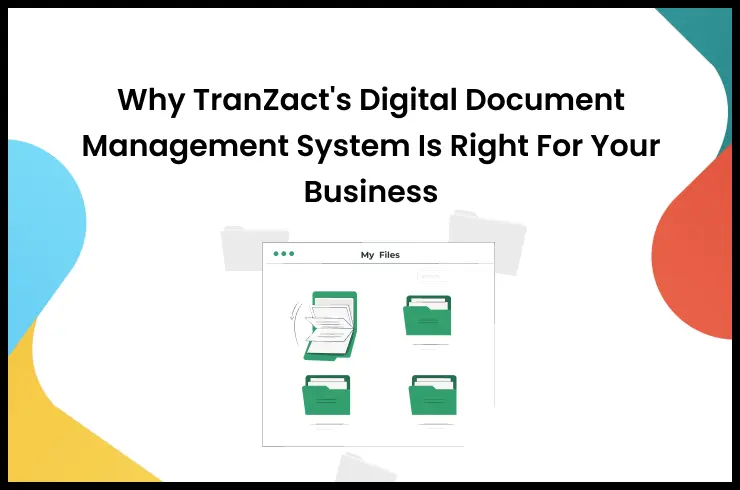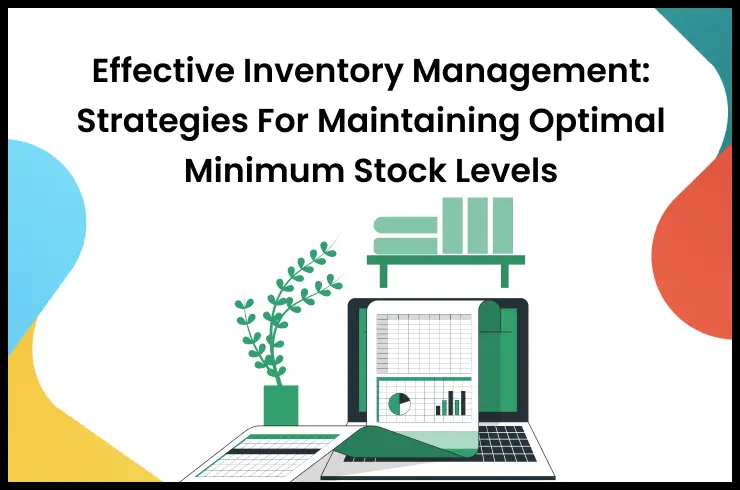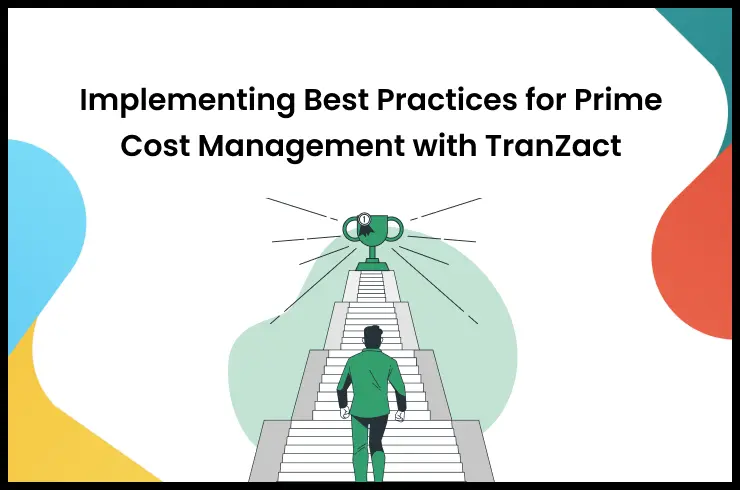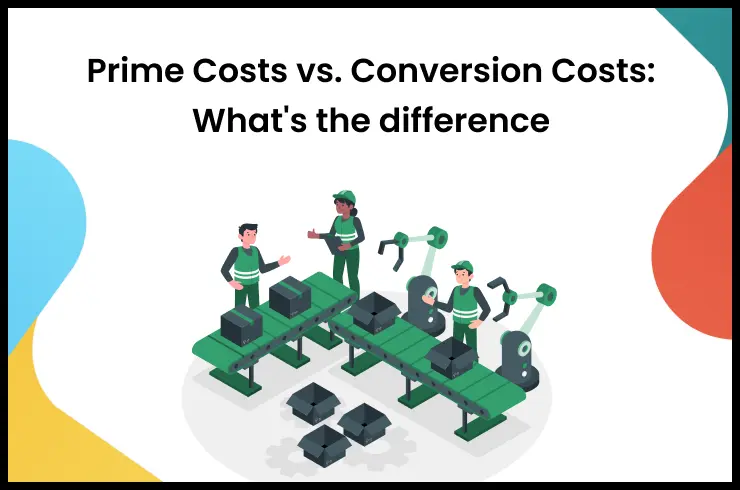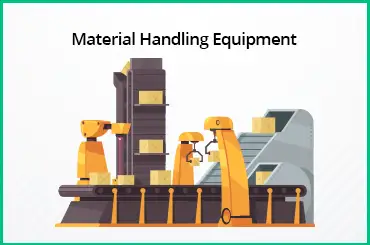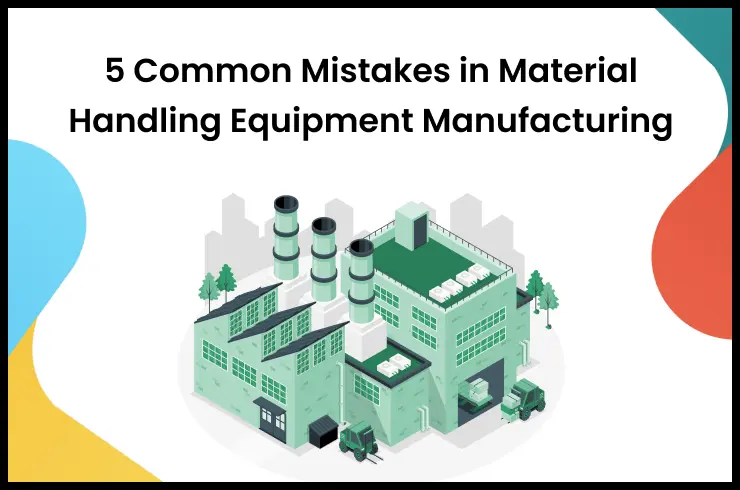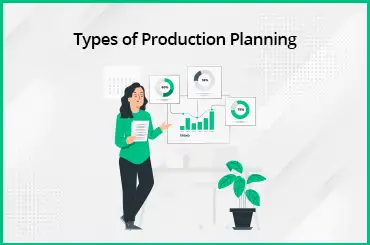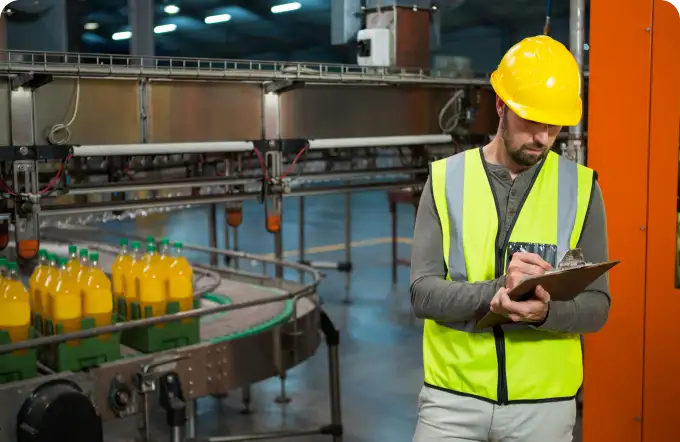Using Production planning software a manufacturer can take control of many processes and steps in the production cycle.Production planning and control plays an important role in making sure that the right processes are in place to manage production effectively. But what is production planning and control exactly and why is it important? In this blog, we will learn about:
- What is production planning and control?
- The objectives and benefits of production planning and control
- Importance and functions of production planning and control
- Different phases and elements of production planning and control
- Steps and processes of production planning and control
- How to adapt production planning and control
- Production planning and control in the Manufacturing industry
What Is Production Planning and Control?
The terms “production planning” and “control” relate to two approaches that coordinate key operations effectively throughout the manufacturing process. What to produce, when to produce it, how much to produce, and other factors are all included within this scope.
To properly optimize the production flow, production planning must be seen from a long-term perspective. Production planning and control is the process of organizing all business resources required to meet production requirements efficiently and without any delays. It outlines the procedure based on which the complete work order preparation in a manufacturing business will then proceed.
What is Production Planning?
Production planning is the process of finding out the best ways to manufacture goods. It requires analyzing various factors of manufacturing. A production planning software takes many things into consideration. It includes demand forecasts, resources, capacity, schedules etc. This helps SMEs be fully prepared for their production.
Read 5 Ways Production Planning Software Can Boost Manufacturing Efficiency.
What is Production Control?
Production control is the process of monitoring the production plans. It involves continuously looking at the production processes. This may include producing activities, tracking progress etc. A manufacturing business can then adjust its production based on that. The main goal is to reduce errors and make the production process as perfect as possible.
Objectives of Production Planning and Control
The following are the main objectives of production planning and control:
- Optimum utilization of resources, such as machinery, raw material, labour, etc. to fulfil production demands.
- To maintain optimum stock levels.
- To make sure capacity utilization matches anticipated demand.
- To ensure that the appropriate amount and quality of raw materials, tools, manpower and equipment are available during production.
- To reduce setup and idle time on machines.
- Coordinate with other production-related departments, such as sales and order management services to achieve uninterrupted production flow.
- To facilitate cost control and cost reduction.
- To ensure a profitable and reliable production process.
- To reduce labour turnover and improve client satisfaction.
Read TranZact vs Excel: Effective Planning Tools for Manufacturing Business.
Importance of Production Planning and Control
The production planning and control system works hard to make sure that the business delivers orders as per quality standards and customer expectations. Here are a few reasons why it’s important to have efficient production planning and control in place:
1. Managers can use production planning and control to determine how much stock they'll need by planning each step of the production process.
2. Production planning facilitates decision-making by understanding current trends and demands.
3. It helps in employing the right resources at the right places without exceeding budgets.
4. Production planning and control are also essential for resource management as they can determine the near-exact requirement of direct materials, semi-finished goods and finished goods throughout diverse production cycles.
5. It’s also important for better coordination across various business functions.
Phases Of Production Planning And Control
Let's now understand the different phases or stages of production planning and control.
1. Planning: The complete operation is planned in detail, with the path and sequential order of operations established. This phase involves decisions about the equipment and resources required.
2. Time Planning: This stage involves calculating the time needed for various resources and machines to complete specific segments of the production.
3. Loading: During loading, the workload at each routing point is managed. The start and end of operations are checked for resource availability and support. This phase is important for assigning individual tasks and evaluating efficiency.
4. Production This stage is the start of real work Production orders are issued, starting the movement along the production line.
5. Follow-Up: This involves checking the production line for any bottlenecks or issues that may disturb the flow. Follow-up is important for understanding the efficiency and effectiveness of the process.
6. Inspection: Regular inspections and audits are conducted to verify that all production activities meet the set quality criteria.
7. Correction: After completing the above steps, the results are analyzed to identify and correct any issues. This phase is important for improving efficiency and productivity in future production cycles.
Understand Types of Production Planning (With Examples, Tips, and Techniques).
Steps in Production Planning and Control
There are 6 different phases of production planning and control. These phases or techniques of production planning and control are discussed in detail below:
Step 1: Demand Forecasting
Forecasting in production planning and control is the first and most important step. Analyze historical data, market trends, and customer demand patterns to forecast future demand for products. This serves as a basis for production planning.
Step 2: Master Planning
The creation of a production plan is assisted by key information from numerous sources, including data from sales. This consists of data such as order quantity, promised delivery date, and data from the engineering department, such as any relevant technical specifications. The planning stage ensures a simplified production process and answers the following questions:
- What shall be produced?
- When shall it be produced?
- How shall it be produced?
Step 3: Material Requirements Planning (MRP)
MRP Software helps you calculate the materials needed for production based on master planning. Consider factors such as lead times, inventory levels, and production constraints to generate material requirements planning and procurement recommendations.
Step 4: Capacity Planning
Assess the production capacity and availability of resources such as labor, machines, and equipment. Ensure that production schedules can be met with the available resources and identify any capacity constraints or bottlenecks.
Step 5: Routing
Routing in production planning and control involves the precise path the raw materials take to be converted into finished products. The entire process is thoroughly planned and designed, and the most systematic and reliable order is chosen and approved. Therefore, routing maximizes the utilization of the resources at hand, including personnel, machinery, and materials. Full machine capacity, a quick and cost-effective route, and the availability of alternative routes are the things to be considered during the routing process.
Read Producton Routing - Ultimate Guide for SMEs.
Step 6: Scheduling
Scheduling in production planning and control is the process of determining how long it will take for the completion of a route. The 'when' of the operation is highlighted by scheduling and it seeks to optimize the time allotted for the operation's completion. In short, specifying the sequence and duration of the production activities using master schedules, daily schedules, and operational schedules are important factors in scheduling.
Step 7: Loading
Scheduling and routing plans are put into action at this time. The amount of work assigned to all personnel or machines is examined during loading. The load at each routing point as well as the beginning and end of an operation are examined for resource support and assistance. Data about the amount of time needed to complete a task, the overall workload capacity, and the availability of people and equipment are needed for loading. At this point, the production plan is nearly finished and ready for implementation.
Step 8: Dispatching
Dispatching is the process of starting production activities by issuing orders and instructions in line with the previously scheduled time and sequence, as outlined in route sheets and schedule charts. Dispatching in production planning and control specifically refers to:
- Purchasing the necessary tools and other equipment before the workers actually need them.
- Giving workers the necessary work orders, guidelines, and blueprints to start the project.
Step 9: Follow Up
If a process isn't followed up for updates after completion, it's impossible to determine how effective it is. This function analyzes the manufacturing process, maintains note of any inefficiencies, and looks for ways to further enhance the workflow. The cycle then continues once this process is finished, bringing production closer to its optimum efficiency. So, at this point, check for any obvious or potential bottlenecks that might affect the smooth flow of production at any stage. In short, expediting and following up ensures that the task is completed according to schedule and that delivery deadlines are met.
Step 10: Quality Control
Implement quality control measures to maintain product quality and compliance with standards. Conduct inspections, tests, and audits throughout the production process to identify and resolve quality issues.
Step 11: Performance Monitoring and Improvement
Measure key performance indicators (KPIs) such as production output, cycle times, and resource utilization. Analyze data to identify areas for improvement and implement process enhancements or corrective actions.
Step 12: Feedback and Continuous Improvement
Gather feedback from production activities, customer feedback, and other relevant sources. Use this information to refine and optimize the production planning and control processes continuously.
Functions of Production planning and control
Production planning and control functions are the pillars of this process. PPC fulfills several important roles in making sure efficient production:
1. Forecasting
- Purpose: PPC involves making future projections to create effective schedules.
- Impact: This helps in aligning production activities with future demands, making sure that resources are optimally allocated.
2. Scheduling
- Purpose: PPC provides a detailed timetable for manufacturing activities.
- Impact: This makes sure that production is completed on time, meeting delivery commitments and maintaining workflow efficiency.
3. Routing
- Purpose: PPC outlines the flow of work and the sequence of production activities.
- Impact: By defining the path of production, routing helps in optimizing processes and reducing bottlenecks.
4. Make or Buy Decisions
- Purpose: PPC plays an important role in deciding whether to manufacture a component in-house or purchase it from an external supplier.
- Impact: These decisions, typically made during the planning phase, can significantly affect cost, quality, and production timelines.
5. Requirements Planning
- Purpose: PPC is responsible for determining the precise quantity of materials needed for production.
- Impact: This makes sure that materials are available when needed, avoiding delays and inefficiencies in the production process.
6. Material Control
- Purpose: PPC not only makes sure the availability of materials but also makes sure their optimal use.
- Impact: Effective material control minimizes waste. It also promotes cost-effectiveness, contributing to overall production efficiency.
Learn Strategies for Successful Production Planning in a Changing Manufacturing Landscape.
Benefits of Production Planning and Control
Some of the advantages of production planning and control are:
- Expert production planning and control results in uninterrupted production thanks to the elimination of related holdbacks, such as shortage of materials, tools and poor machine maintenance.
- It leads to cost control, higher productivity, and hence, maximization of profits due to optimum use of available resources.
- Guaranteed consumer satisfaction and improved client relationships are other benefits, accomplished due to on-time deliveries.
- Businesses can also achieve a reduction in costs associated with storage and material handling.
- Production planning and control also reduce idle time across activities, leading to minimal resource wastage.
- Increased manufacturing capacity with production planning and control ensures that labour and machinery are also used optimally.
- Businesses can enable better material procurement to indicate when materials should be bought for production. This promotes financial savings and strengthens connections with suppliers.
Processes of Production Planning and Control
Following are the key processes within production planning and control:
Job production
The different tasks carried out in this process form the basis of production. It involves producing goods to fulfil unique requests from customers with very particular needs. Typically, the order quantity is small, thus it might leave machines idle occasionally.
Mass production
The mass production process of production planning and control is designed for high demand and large order quantities. Enterprises that manufacture goods in huge quantities frequently use this production method.
Also, it decreases the holding cost of inventory and lead times due to continuous production. Given the high production rate, this process does not account for specialization.
Batch production
In this process, many identical products are manufactured in batches, either to fulfil a specific order or to meet ongoing demand. The two main elements, setup cost and carrying costs, are used to determine batch size. Long-term use of this strategy aids in the efficient use and allocation of the available resources.
Production Planning and Control in the Manufacturing Industry
Many manufacturers rely on outdated spreadsheets to be informed of production errors and schedule delays. But spreadsheets don't auto-update, they are a static resource. This can cause failure to notify changes leading to loss-making delays.
Therefore, the manufacturing industry requires modern production planning and control tools with automated Bill of Material (BOM) for multilevel process planning. TranZact provides SMEs with all the resources required for efficient production planning and control.
With it, you can manage resources, plan projects, make schedules, and keep track of changes all in one tool. Multilevel BOM, Material Requirement Planning, and other modules are provided by TranZact to assist SMEs with seamless production planning solutions.
Production Planning and Control With TranZact
To be successful, manufacturers must provide high-quality products at affordable costs. Also, they require enough operational flexibility to meet rapidly shifting market demands. For this, it’s important for manufacturing businesses to automate production planning and scheduling and resolve problems related to production without delays.
SMEs can either go the traditional way or use a software solution to ease this process. Effective production planning using automated production planning software like TranZact makes it easier to follow pre-identified strategies. It helps to lay out production plans and control measures clearly for your entire team and is accessible around the clock.
Learn How TranZact Can Streamline Your Manufacturing Planning Process.
TranZact enables you to prepare all the blueprints and documentation for production planning and control, including multilevel Bill of Material, Material Requirement Planning, and finished goods testing. It enables quick decision-making with a production module that’s closely linked with its sales module. This helps managers to easily decide which orders are to be taken forward for production.
FAQs
1. What are the types of production management?
Production planning is applied in many different businesses and regions of the world in diverse ways. Based on the functions of production planning and control, below mentioned are a few types that are known all over the world.
- Job-based planning
- Batch planning
- Flow Planning
- Process planning
2. What is the difference between production planning and production control?
Scheduling, dispatch, inspection, quality control, inventory management, supply management, and equipment management all rely on production planning.
Production control, on the other hand, guarantees that the production team will be able to meet the necessary production target, make the best use of available resources, manage quality, and save costs.
It is crucial to integrate a production planning and control system into the manufacturing unit of a business for smooth and effective operation.
3. What are the 7 stages of production planning and control?
The 7 main stages of production planning and controlling are:
- Planning
- Time Planning
- Loading
- Production
- Follow-Up.
- Inspection
- Correction
4. What are the 5 steps to production planning?
The 5 main steps of production planning are:
- Planning
- Routing
- Scheduling
- Loading
- Dispatching
- Follow-up
5. What are the key 5 functions of production planning and control?
The five key functions of production planning and control are Forecasting, Scheduling, Making Decisions, Planning and Material Control.
6. What are the elements of production planning and control?
The main elements of production planning and control are Decision Making, Planning, Routing, Scheduling, Loading, Dispatching, Follow-Up, Inspection and Corrective Actions.







